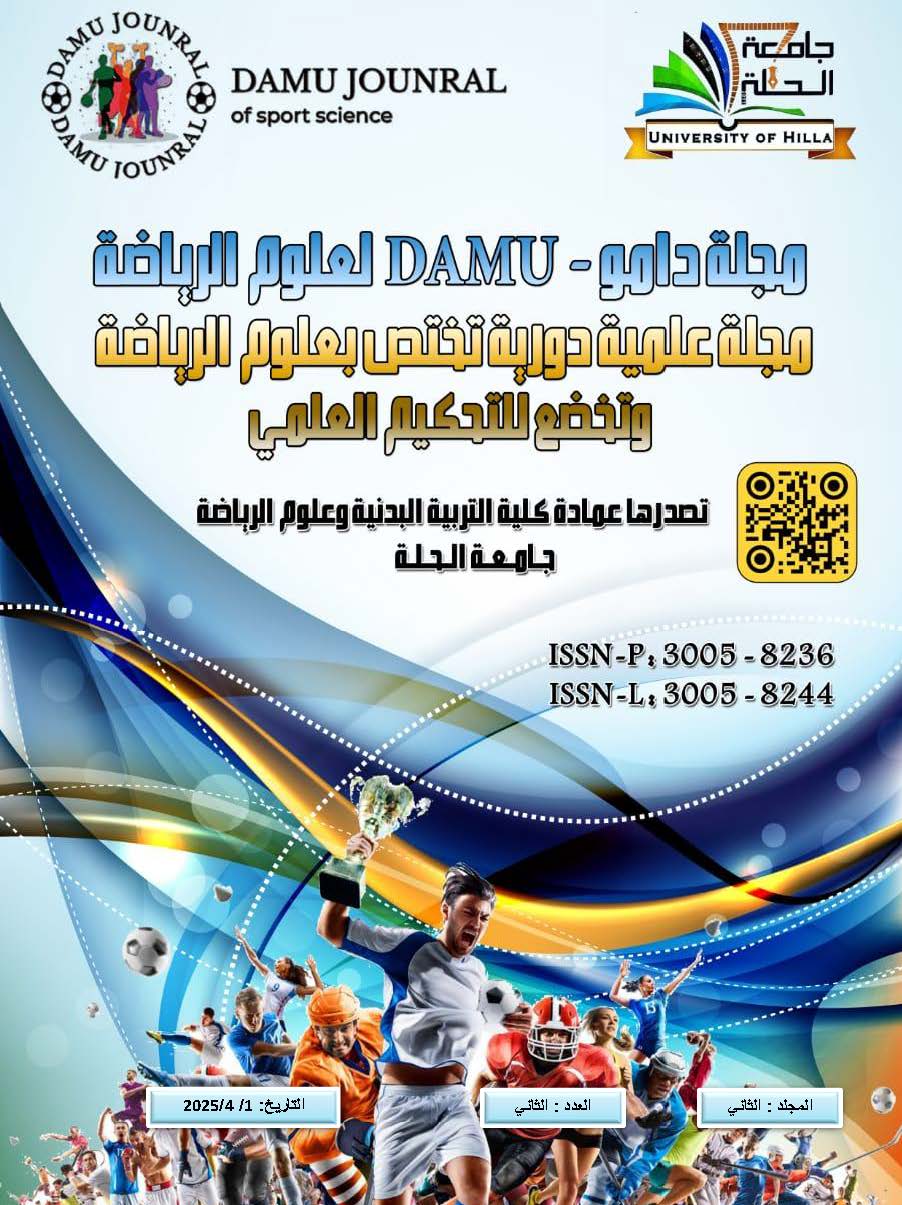The Effect of Repetition-Intensity Wave Training on CPK and LDH Enzymes and Performance in the 400m Freestyle for Under-20s
DOI:
https://doi.org/10.64002/43e1a478Keywords:
Repetition intensity wave training, Repetition intensity wave training, CPK and LDH enzymes, CPK and LDH enzymes, 400m freestyle performance, 400m freestyle performanceAbstract
New training methods are used to develop certain physical abilities and variables. One of these methods is repetition-intensity wave training. The concept of these exercises focuses on dividing the distances during training and then setting a wave-intensity for the same repetition according to specific distances for the runner, or setting an intensity for one repetition and a different intensity for another. Therefore, when preparing a training program for runners, the training objective should be to develop the components and focus on developing the variables that lead to increased performance by utilizing these exercises. The recovery process must also be taken into account. Therefore, the importance of this research lies in identifying the data, statistics, and information within these exercises to determine their impact on the CPK and LDH enzymes and the performance of 400m freestyle runners under the age of 20. The researchers concluded that some training methods should be added to raise the performance of runners, through the training concept of undulating training in repetition intensity, while abandoning traditional training methods that raise training levels, but not to the required level that simulates the numerical performance of the 400m freestyle event. Therefore, the researchers decided to prepare training sessions and standardized training loads to develop the CPK and LDH enzymes and achieve the 400m. They studied this case in detail to serve the training process in the field of athletics in general and the 400m freestyle event in particular. The objectives of the research were to develop exercises, include them in training sessions, and identify the effect of these exercises on the CPK and LDH enzymes and performance of 400-meter runners. The research hypotheses are that there is a positive effect of high-repetition wave training on the CPK and LDH enzymes and performance in the 400-meter race.
The researchers used the experimental approach by designing two equivalent groups (experimental and control) with pre- and post-tests and measurements. The research population was determined by runners from Karbala Governorate clubs under the age of 20 in the 400-meter freestyle event, totaling 18 runners from eight clubs.
The research conclusions and recommendations were that there was a significant effect between the experimental group and the control group on the CPK and LDH enzymes and performance of 400-meter runners, in favor of the experimental group. The researchers recommend applying high-repetition wave training to other enzymes, new events, and different categories.





